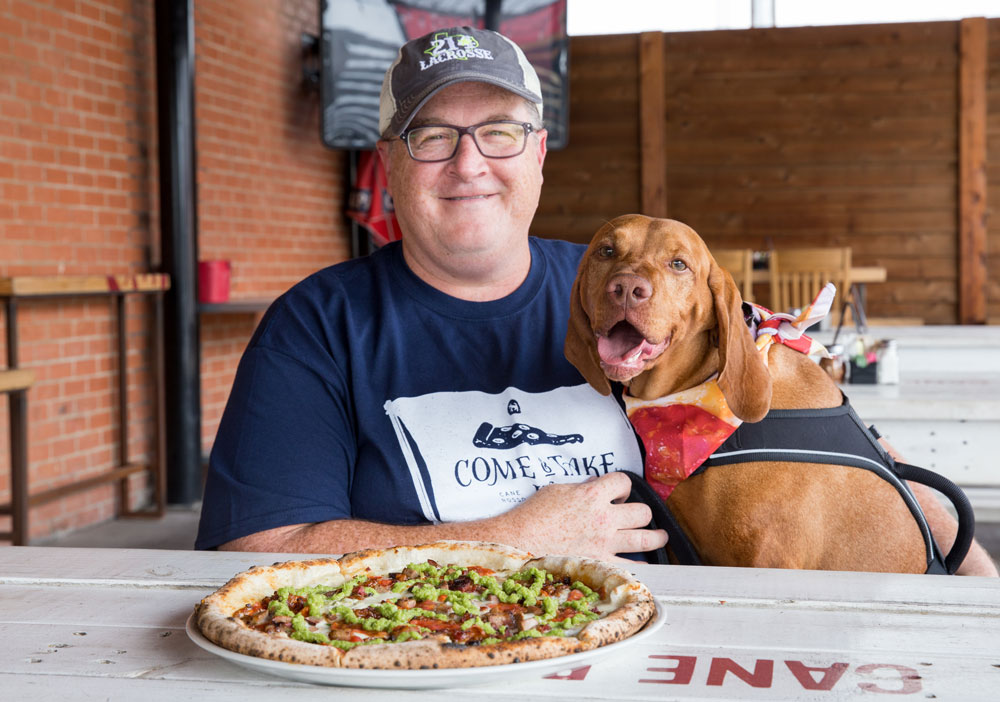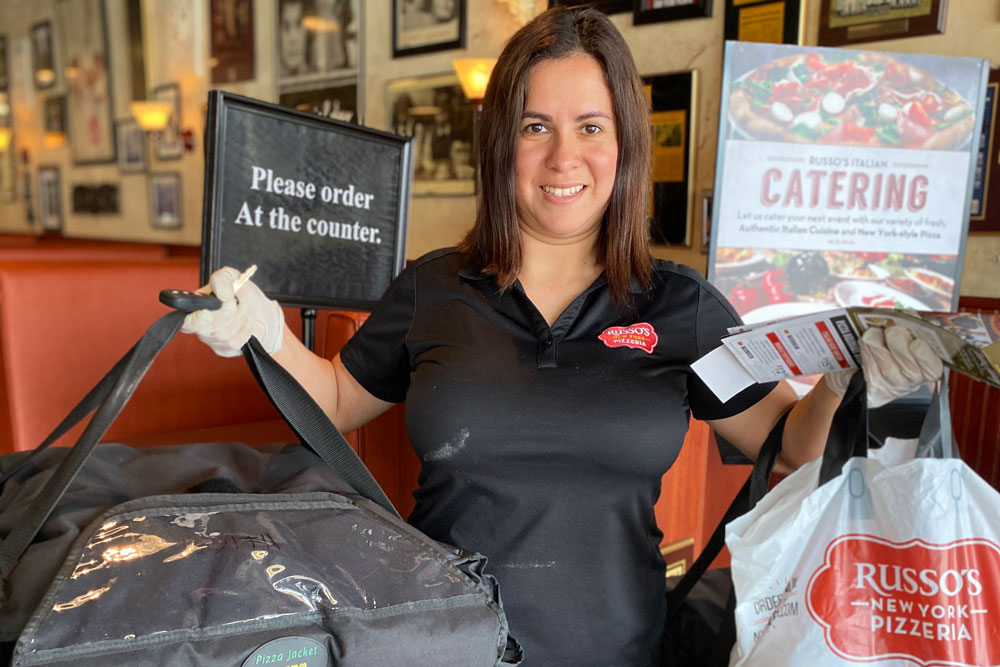By Rick Hynum
The sudden explosion of post-lockdown jobs in the restaurant industry has proven an unexpected boon to America’s workers. For restaurant owners, not so much. Faced with the choice of closing their doors and laying off employees during a pandemic versus running a busy store with too little staff, most operators would choose the latter—but now that it’s a reality, they’re not happy about it.
The nation’s economy created 850,000 new jobs in June 2021, according to a U.S. Department of Labor (DOL) report. Overall wages climbed by 3.6% year-over-year, while hospitality workers were earning 7.9% more than they made before the pandemic. But many Americans aren’t necessarily eager to get back into a hot, steamy restaurant kitchen or a jam-packed dining room to make their living. And some who currently work in restaurants are getting out: A record 5.6% of restaurant employees quit their jobs in April 2021, the DOL report found.
“I don’t think there’s a shortage of employees,” Lenny Rago, co-owner of Panino’s Pizzeria in Chicago, told PMQ in last month’s cover story. “I think there’s a shortage of people who want to work in our industry.”
According to a July 7 report, titled “The Labor Shortage: A Consistent and Complex Topic,” by Black Box Intelligence, limited-service restaurants have posted strong same-store sales growth since the beginning of 2021, but they’ve been unable to staff up to pre-pandemic levels. And guests are noticing. “The chatter from guests mentioning restaurants being understaffed in their online reviews and comments continues to increase,” the report states. “We saw the biggest increase in related mentions in March 2021.”
So how do we lure employees back into the restaurant business? That’s the multibillion-dollar question for the industry.

Showcasing your company’s good works in the community—such as Texas-based Cane Rosso owner Jay Jerrier’s dog rescue nonprofit—is a good way to attract Generation Z and millennial workers.
Paying a Living Wage
Michael Lastoria, co-founder and CEO of the Washington, D.C.-based &pizza chain, believes he knows the answer: pay your employees a living wage and find ways to cut expenses elsewhere. An outspoken advocate for raising the minimum wage to at least $15, Lastoria makes it known in media interviews that &pizza employees earn an average of $16 per hour and his company is doing just fine—in fact, it keeps growing.
“It’s pretty simple, actually,” Lastoria says. “I believe that if you treat workers with dignity, they will be more invested in the success of the company. A satisfied workforce is the key to a successful business because if they feel their work is valued, they will put more into the job, which results in happier customers and a strong sense of brand.”
“I don’t think there’s a shortage of people who want to work in our industry. I think there’s a shortage of people who are willing to accept the status quo.”
— Michael Lastoria, &pizza
For Lastoria, treating workers with dignity means, in part, paying them well, but it’s more than that. And he disagrees with Rago on one key point. “I don’t think there’s a shortage of people who want to work in our industry,” he says. “I think there’s a shortage of people who are willing to accept the status quo. Remember, millions of restaurant workers were fired or furloughed during the pandemic. Those who weren’t were often forced to put their health at risk by potentially exposing themselves to COVID-19 at work, or they were subjected to abuse by customers when they tried to enforce their shop’s pandemic protocols.”
He says the pandemic has brought more attention to “issues that have been problems in the restaurant industry for decades: low wages, lack of benefits, dangerous working conditions, the cyclical nature of laying off and rehiring staff when it’s convenient for employers’ balance sheets,” Lastoria continues. “These are not new problems, but we need new solutions.”

In addition to paying an average of $16 per hour, &pizza has built a hip brand that appeals to younger employees who want to get excited about coming to work.
&pizza already offered full health benefits to its employees prior to COVID-19. As the pandemic worsened last year, the company kept 85% of its stores running and 90% of its employees on the payroll—and stayed profitable. As lockdowns were put into place in March 2020, &pizza hiked wages across the board by $1 an hour to keep employees coming into work. &pizza also gave them an additional three days of paid time off for activism and expanded sick-pay coverage for all employees.
In return, &pizza has been able to retain a quality staff and hire new employees as it continues to grow, Lastoria says. The company opened its 51st store in July and expects to finish 2021 with 65 locations. “We see an average year-over-year sales increase of 300 to 500 basis points [or 3% to 5%] through reduced turnover and consistent shop leadership,” he adds. “Labor productivity continues to surge as our workforce feels appreciated, supported and engaged.”
Rethinking the Hiring Process
Of course, not every restaurateur agrees that there is no labor shortage. And some point to federal pandemic relief efforts as the culprit. “The labor shortage is caused by the extended unemployment benefits that are providing an average of $22 an hour to people for staying home,” says Anthony Russo, head chef and founder of Russo’s New York Pizzeria, headquartered in Houston. “That isn’t something the restaurant business can keep up with, since most restaurants pay their employees between $10 and $14 an hour. This makes it hard to recruit people for the job when they know they can make more money for doing no work.”
Russo’s lament is shared by many restaurant operators who believe Congress and President Biden went too far with federal relief and that businesses are paying the price. But Seth Goodman, director of operations for Crust Wood Fired Pizza in Charleston, South Carolina, sees things a bit differently. Like Rago, Goodman thinks the problem “runs deeper” than extended unemployment benefits. “I think the largest driving factor is that people left F&B at the beginning of the COVID crisis and have settled into other jobs and haven’t returned to the industry.”

Russo’s New York Pizzeria offers a $50 bonus to existing employees who recommend a potential candidate that gets hired for the team.
Cabot Jaffee, an industrial/organizational psychologist and president/CEO of Align Mark in Maitland, Florida, agrees. A booming job market means more options for workers looking to take the next step in their careers. “Half the battle is just getting people interested in these jobs,” he says. “Why should they work at your pizza restaurant versus the thousands of other places they can choose? The earlier a candidate finds out your unique value proposition, the more likely you will be able to hire them. If they don’t think you’re any different than the others, the candidate will simply go to the closest, highest-paying opportunity they can find.”
Workers in 2021, Jaffee says, “have very different expectations when it comes to applying for a job and how much energy they would expend in order to apply. And this goes beyond just being able to make better money on unemployment, which will end eventually. In the past, the employer drove the hiring process, while today there is a shift to the candidates driving the process.”
That means it’s time to change how we approach the hiring process, Jaffee says. He’s a proponent of ditching old-fashioned written applications and switching to video applications as part of a more “active recruiting” strategy.
Video applications will take more time on your end, but they’re a good way to find high-quality employees who would otherwise never apply because they lack experience. When a candidate looking to get their first restaurant job sees a question about their prior experience on a written form, they might immediately feel at a disadvantage and just give up without completing the application.
“In a video application, when the candidate answers ‘none,’ the onscreen interviewer responds to the candidate and assures them that having no experience is OK and that they will be provided training to get them up to speed,” Jaffee says. “In other words, the candidate is getting ‘recruited’ and shown the company’s employee value proposition from the very beginning of the application process. This is a significant change from the traditional text-based, one-way application currently being used by most companies.”
Back in May, Ledo Pizza, based in Annapolis, Maryland, took a similar but different tack. Looking to hire 1,000 new employees, the company hosted a National Hiring Day event at all of its 107 locations. Candidates were invited to download an application and bring it to their local Ledo Pizza store, where they were interviewed by managers on the spot. This approach also ensured that applicants and employers could better communicate face-to-face from the start, without paperwork getting in the way.
“The labor shortage is caused by the extended unemployment benefits that are providing an average of $22 an hour to people for staying home. That isn’t something the restaurant business can keep up with.”
— Anthony Russo, Russo’s New York Pizzeria
Create an Employee-First Culture
Also, keep in mind that potential employees aren’t just taking hourly wage into consideration. “To make your jobs more appealing in times like these, you will need to put benefits at the forefront,” advises Douglas Liantonio, a marketing outreach analyst with Gravy in Atlanta. “If you don’t have pooled tips, that will attract more workers as well. Promote how much your top servers make. People need numbers in times like this.”
Darren Easton, vice president and creative director of The Cyphers Agency in Crofton, Maryland, says perception of your pizzeria’s brand online is particularly important in attracting high-quality candidates. “This will lead candidates to seek you out, look at your website and social channels, etc. And, if you seem like a great brand, they’ll want to join your team and become part of it,” he says. “With that in mind, you should showcase everything that makes you great: your happy employees, your pay and perks, your philanthropy, your good-looking restaurant interior and exterior, and your great food—in a nutshell, anything and everything that you promote to your consumers.”
The late marketing guru Tom Feltenstein often said restaurateurs should create an employee-first culture and think of workers “not as hired hands but as internal customers,” which goes back to Lastoria’s point about treating employees with dignity. In turn, your employees become recruiters for your brand. “Because our employees are happy with their work environment, they tend to be our best bet for word-of-mouth referrals,” Goodman says. Russo’s New York Pizzeria even offers a $50 bonus to existing employees who recommend a potential candidate that gets hired for the team.
Easton agrees that your top employees can help recruit new team members. “You could hold a grand opening-style recruitment event, inviting your current employees to bring their friends or family to learn about job opportunities over free food and drinks.”
Kristin Dyak, digital marketing director at The Cyphers Agency, adds, “It’s always critical to promote your restaurant online with great content and engage with your customers in a timely and polite fashion, but you should see prospective employees in the same way,” she says. “That means posting your jobs regularly, using hashtags, encouraging the public to share the opportunities, engaging with people who ask you questions, etc.”
“It’s also important to not dismiss the power of more traditional media, including your own real estate and products,” Easton adds. “For example, you should put a ‘We’re Hiring’ announcement on your digital signage and your menu board and include an insert in your menus and on your pizza boxes. Depending on how often you print them, you could even print a hiring announcement right on the box.”
Whatever your approach to hiring staff might be, you should use every resource at your disposal, including advertising on social media and job boards like Indeed.com. But the aforementioned Black Box Intelligence report makes one thing clear: “For the job market to fully recover, the increased wage trend must continue.”
And not just for chains like &pizza, Lastoria says. “If you are a smaller, independent operator, the best way to manage [a wage increase] is to do it now and reap the benefits of being one of the first. In the short term, it will impact the bottom line, but, over the longer term, it will lead to improved product quality, labor efficiency, workplace and customer satisfaction and, ultimately, higher sales and margins. Like technology, wages are now a disruptor, and, like technology, you don’t want to be the last to adopt, or you will be left behind.”
Rick Hynum is PMQ’s editor in chief.













